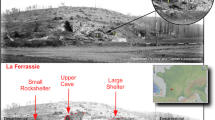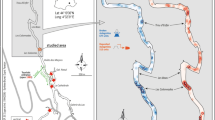Abstract
The ‘Alwar Quartzite’ has been extensively used in several stone-built monuments in Delhi (capital city of India) and states of North India. Several monuments of Delhi in particular, built during the ‘pre-Sultanate period’ (eleventh century or earlier) to the British Raj in the late nineteenth century, have extensively utilised the Alwar Quartzite as the main building material. The use of the Alwar Quartzite as rubble masonry in the fortification of famous forts, such as the Purana Qila and the Tughlaqabad Fort, to the ashlar masonry in the British Barracks is more than evident in Delhi. During the Islamic rule, the locally available Alwar Quartzite was commonly used for the construction of tombs, mosques, victory towers, etc. within the precincts of Qutb Complex and Humayun’s Tomb Complex, the well-known UNESCO World Heritage sites, and also in the form of scattered monuments in the erstwhile city of Delhi. The Alwar Quartzite was an equally preferred building material by several Hindu rulers for the fortification of Amer, Jaigarh, Nahargarh, Bhangarh, Moti Dungri and several other forts in the north-eastern part of the Rajasthan State. Local availability and abundant supply of the Alwar Quartzite, coupled with its strength and durability, have been the prime consideration in making it an automatic choice as the main masonry stone in several architectural monuments in North India through disparate cultures and kingdoms. The Alwar Quartzite is a compact and almost monomineralic rock, mainly comprising recrystallised quartz. It is resistant to physico-chemical weathering and has high shear and compressive strength and has remained almost undamaged for more than 1000 years, as seen in several monuments. Such characteristics of this unique building material, used in North India in different time frames and by different cultural groups, render it a likely candidate for the designation of a GHSR from India.











Similar content being viewed by others
References
Balasubramaniam R (2005) The World Heritage Complex of the Qutub. Aryan Books International, New Delhi.
Banerjee AK (1980) Geology and mineral resources of Alwar district, Rajasthan. Memoir of Geological Survey of India: 110
Batra NL (2007) Dilli's Red Fort by the Yamuna. Niyogi Books, Delhi
Biju-Sekhar S, Yokoyama K, Pandit MK, Okudaira T, Yoshida M, Santosh M (2003) Late Paleoproterozoic magmatism in Delhi Fold Belt, NW India and its implication: evidence from EPMA chemical ages of zircons. J Asian Earth Sci 22(2):189–207
Chakrabarti B, Gupta GP (1990) Transect Geology Of The North Delhi Fold Belt. Geological Survey of India (Unpublished Report)
Chaturvedi A, Kanwar D, Sengupta R (2003) Delhi: Agra & Jaipur. DK Publications, London (https://archive.org/details/dehliagrajaipur00kate/page/116/mode/2up?q=quartzite )
Cipriani C (2000) Fodor's India. Fodor's Travel Publications, New York (https://archive.org/details/fodorsindia3rded00fodo/page/150/mode/2up?q=quartzite)
Cooper BJ, Marker BR, Pereira D, Schouenborg B (2013) Establishment of the “Heritage Stone Task Group” (HSTG). Episodes 36(1):8–10
Erskine KD (1908) Imperial Gazetteer of India. Rajputana. Superintendent of Government Printing, Calcutta, Provincial Series (https://ia801609.us.archive.org/32/items/in.ernet.dli.2015.207013/2015.207013.Imperial-Gazetteer.pdf)
Garg S, Kaur P, Pandit M, Kaur G, Kamboj A, Thakur SN (2019) Makrana marble: a popular heritage stone resource from NW India. Geoheritage 11(3):909–925
Geological Survey of India (2001) Geology and mineral resources of Rajasthan. Misc Publ No. 30 Part 12, 2nd Revised Edition:1-113
Gupta SN, Arora YK, Mathur RK, Iqbaluddin BP, Sahai TN, Sharma SB, Murthy MVN (1980) Lithostratigraphic map of Aravalli region, southern Rajasthan and northeastern Gujarat. Geological Survey of India, Hyderabad
Gupta SN, Arora YK, Mathur RK, Iqbaluddin PB, Sahai TN, Sharma SB (1997) Precambrian geology of the Aravalli region, Southern Rajasthan and Northeastern Gujarat, India. Memoirs of Geological Society of India 123:262
Gupta S (2006) Delhi Domes in Transition. In: Lourenço PB, Roca P, Modena C, Agrawal S (eds.) Structural Analysis of Historical Constructions, Possibilities of numerical and experimental techniques, Proceedings of the 5th International Conference New Delhi, India, Vol I. Macmillan India Ltd, pp 269-276
Guruswamy S (2019) Sedimentary ripple marks from pavements of forts in Jaipur. Rajasthan India:101–107
Hedger-Gourlay F, Ingham L, Newton J, Tabor E, Worrell J (2006) Lal Kot and Siri
Heron AM (1917) Geology of northeastern Rajputana and adjacent districts. Memoir of Geological Survey of India 45:1–128
Heron AM (1953) The geology of central Rajputana. Memoirs of Geological Society of India 79:1–389
Jain J (2008) Structure as a document. In: D'Ayala D, Fodde E (eds) Structural analysis of historic construction: preserving safety and significance, United Kingdom. CRC Press 1:289–294
Kaul BL, Pandit MK (2004) Morphotectonic evaluation of the Delhi region in northern India, and its significance in environmental management. Environ Geol 46(8):1118–1122
Kaur G, Mehta PK (2007) Geochemistry and petrogenesis of Jasrapura granitoid, North Khetri Copper Belt, Rajasthan: evidence for island arc magmatism. J Geological Society of India 69(2):319
Kaur G, Makki MF, Avasia RK, Bhaskar B, Duraiswami RA, Pandit MK, Fareeduddin BR, Kad S (2019a) The late Cretaceous-Paleogene Deccan traps: a potential global heritage stone province from India. Geoheritage 11(3):973–989
Kaur G, Singh S, Kaur P, Garg S, Pandit MK, Agrawal P, Acharya K, Ahuja A (2019b) Vindhyan Sandstone: a crowning glory of architectonic heritage from India. Geoheritage 11(4):1771–1783
Kaur G, Singh SN, Ahuja A, Singh ND (2020a) Natural stone and world heritage: Delhi-Agra. CRC Press, India
Kaur G, Ahuja A, Thakur SN, Pandit M, Duraiswami R, Singh A, Kaur P, Saini J, Goswami RG, Prakash J, Acharya K (2020b) Jodhpur Sandstone: an architectonic heritage stone from India. Geoheritage 12(1):16
Kaur G, Kaur P, Ahuja A, Singh A, Saini J, Agarwal P, Bhargava ON, Pandit M, Goswami RG, Acharya K, Garg S (2020c) Jaisalmer golden limestone: a heritage stone resource from the desert of Western India. Geoheritage 12:53
Kaur G, Bhargava ON, de Argandoña VG, Thakur SN, Singh A, Saini J, Kaur P, Sharma U, Garg S, Singh JJ, Cárdenes V (2020d) Proterozoic slates from Chamba and Kangra: a heritage stone resource from Himachal Pradesh, India. Geoheritage 12(4):1–20
Kaur G, de Oliveira Frascá MH, Pereira D (2021) Natural Stones: architectonic heritage and its global relevance. Episodes Journal of International Geoscience 44(1):1-2
Li XC, Zhou MF, Williams-Jones AE, Yang YH, Gao JF (2019) Timing and genesis of Cu–(Au) mineralization in the Khetri Copper Belt, northwestern India: constraints from in situ U–Pb ages and Sm–Nd isotopes of monazite-(Ce). Mineral Deposita 54(4):553–568
Mehdi M, Kumar S, Pant NC (2015) Low grade metamorphism in the Lalsot-Bayana sub-basin of the North Delhi Fold Belt and its tectonic implication. J Geological Society of India 85(4):397–410
Mohan M (2000) Climate change: evaluation of ecological restoration of Delhi ridge using remote sensing and GIS technologies. International Archives of Photogrammetry and Remote Sensing, 33(B7/2; PART 7):886-894
Naqvi SAA (2002) Humayun’s Tomb and adjacent monuments. Archeological Survey of India, New Delhi (https://archive.org/details/HumayunsTombAndOtherAdjacentMonuments/page/n5/mode/2up?q=delhi )
Naz J, Bairwa MK (2018) Interim report on geochemical mapping in toposheet nos. 45N/13 covering parts of Jaipur District of Rajasthan. Geological Survey of India (Unpublished Report)
Negi P, Chakraborty T (2016) Acoustic emission monitoring on Delhi quartzite under compressive loading. In Recent advances in rock engineering (RARE). Atlantis Press, Paris
Page JA, Sharma YD (2002) Qutb Minar & adjoining monuments. Archaeological Survey of India (https://ia801001.us.archive.org/24/items/QutbMinarAndAdjoiningMonuments-English/QutbMinarAndAdjoiningAreas.pdf )
Peña F, Lourenço PB, Mendes N. (2008) Seismic assessment of the Qutb Minar in Delhi, India
Pereira D, Page K (2017) A new IUGS Commission for Geoheritage: the ‘ICG’. Episodes 40:77–78
Powlett PW (1878) Gazetteer of Ulwar. Trubner & Co., Ludgate Hill, London (https://archive.org/details/gazetteerofulwur00powliala/mode/2up)
Roy AB, Jakhar AR (2002) Geology of Rajasthan (Northwestern India) Precambrian to recent. Scientific Publication, Jodhpur
Sharma VK (2019) Heritage stones in India. Geol Soc Lond, Spec Publ 486:325–341
Singh SP (1984) Fluvial sedimentation of the Proterozoic Alwar Group in the Lalgarh Graben, northwestern India. Sediment Geol 39(1-2):95–119
Singh SP (1988a) Stratigraphy and sedimentation pattern in the Proterozoic Delhi Supergroup, Northwestern India. Memoirs of Geological Society of India 7:193–206
Singh SP (1988b) Sedimentation pattern of the Proterozoic Delhi Supergroup, NE Rajasthan, India and their tectonic implications. Sediment Geol 58:79–94.
Singh U (2006) Delhi: ancient history. Social Science Press, New Delhi
Sinha-Roy S (1984) Precambrian crustal interaction in Rajasthan, NW India. In: Proc Seminar on Crustal evolution of Indian shield and its bearing on metallogeny. Indian J of Earth Science:84–91
Sinha-Roy S, Malhotra G, Mohanty M (1998) Geology of Rajasthan. Geological Society of India, Bangalore, pp 1–278
Sreejith C, Del Lama EA, Kaur G (2021) Charnockite: a candidate for ‘Global Heritage Stone Resource’ designation from India. Episodes 44:19–29.
Taknet DK (2016) Jaipur: gems of India. Lustra Print Process Private Limited, New Delhi
Thapar BK (1972) The buried past of Delhi. Expedition 14(2):21–26
Thussu JL (2006) Geology of Haryana and Delhi. Geological Society of India Publication, Bangalore
Tripathi JK, Rajamani V (2003) Weathering control over geomorphology of supermature Proterozoic Delhi quartzites of India. Earth Surface Processes and Landforms: The Journal of the British Geomorphological Research Group 28(13):1379–1387
Tyagi A (1980) Mineralogical and geochemical changes leading to the formation of clay deposits in the Mehrauli area, South Delhi. PhD Thesis, Delhi University, India
Wang W, Cawood PA, Pandit MK, Zhou MF, Chen WT (2017) Zircon U–Pb age and Hf isotope evidence for an Eoarchaean crustal remnant and episodic crustal reworking in response to supercontinent cycles in NW India. J Geol Soc 174(4):759–772
Zaweed MS (2010) Continuity and change in architectural elements at amber palace buildings (1560-1880). Proceedings of the Indian History Congress, 2010-2011. Indian History Congress 71:1122–1133
Zaweed S (2015) Medieval monuments of Mehrauli: reality and myth. In: Proceedings of the Indian History Congress Indian History Congress 76:748-758
Web Links/Sources
Hashmi S (2013) Material dictates https://www.thehindu.com/news/cities/Delhi/material-dictates/article4344855.ece. Accessed 17 November 2020
http://cgwb.gov.in/AQM/NAQUIM_REPORT/Delhi/old/Naquim%20Report%20Delhi%20.pdf. Accessed 16 November 2020
https://archive.org/details/gazetteerofulwur00powliala/page/180/mode/2up. Accessed 15 December 2020
https://archive.org/details/gazetteerofulwur00powliala/page/182/mode/2up. Accessed 15 December 2020
https://archive.org/details/gazetteerofulwur00powliala/page/30/mode/2up. Accessed 15 December 2020
https://archive.org/details/gazetteerofulwur00powliala/page/84/mode/2up. Accessed 15 December 2020
https://archive.org/details/in.ernet.dli.2015.207013/page/n87. Accessed 15 December 2020
https://globalheritagestone.com/reports-and-documents/terms-of-reference/. Accessed 25 December 2020
https://www.wmf.org/sites/default/files/article/pdfs/Purana%20Qila%20and%20its%20Surroundings.pdf. Accessed 17 December 2020
https://www.wmf.org/sites/default/files/article/pdfs/Tughlaqabad.pdf. Accessed 19 November 2020
https://archive.org/details/in.ernet.dli.2015.207013/page/n289/mode/2up. Accessed 15 December 2020
https://archive.org/details/in.ernet.dli.2015.207013/page/n293/mode/2up. Accessed 15 December 2020
Sultan P (2019) Historical trove: Red fort to have cluster of museums https://www.newindianexpress.com/thesundaystandard/2019/apr/07/historical-trove-red-fort-to-have-cluster-of-museums-1961241.html#:~:text=In%20place%20of%20Mughal%20structures,are%20lined%20with%20quartzite%20stones. Accessed 15 November 2020
Acknowledgements
The authors wish to acknowledge the support and help extended by Mr. Mukul Rastogi, CEO, Centre for Development of Stones (CDOS), during the execution of the project. We are grateful to Sh. Alok Jain, Superintending Geologist, Department of Mines and Geology, Rajasthan, for help in the sample collection of Alwar Quartzite at some locations. The authors are thankful to Sh. Manish Gupta, Lab Technician, CDOS, who conducted the physical and chemical tests on the samples. GK wishes to acknowledge Vice-Chancellor (Panjab University) and Chairman (Geology Department) for granting duty leave and facilities to conduct studies on Heritage Stones of India. Mr. Rajeev, Senior Technician, Department of Geology, Panjab University, Chandigarh, is thanked for preparing thin sections for petrographic studies. Help received from officers and staff of ASI, Delhi Circle, during the visit to UNESCO sites of Delhi, is sincerely acknowledged. We are thankful to the two anonymous reviewers for their valuable comments on an earlier version of the manuscript.
Author information
Authors and Affiliations
Corresponding author
Rights and permissions
About this article
Cite this article
Kaur, G., Agarwal, P., Garg, S. et al. The Alwar Quartzite Built Architectural Heritage of North India: a Case for Global Heritage Stone Resource Designation. Geoheritage 13, 55 (2021). https://doi.org/10.1007/s12371-021-00574-8
Received:
Accepted:
Published:
DOI: https://doi.org/10.1007/s12371-021-00574-8




